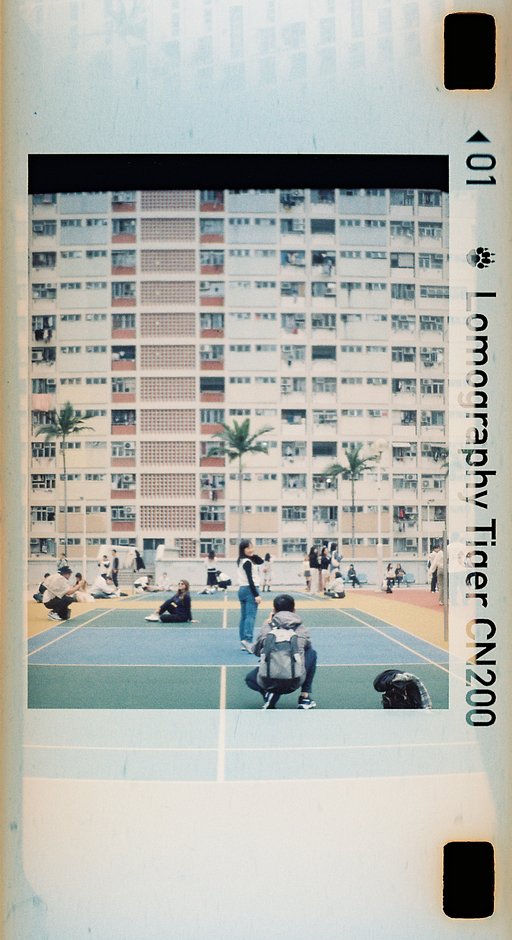Tony's Journey – A Look at The Owner of Megatoni Production's Passion for Large-Format Photography
12 Share TweetEvery film photography enthusiast in Hong Kong would have heard of the film processing service – Megatoni Production located in Sham Shui Po, Hong Kong’s coolest neighborhood right now. In addition to the “cat manager”, there is also Tony, the person-in-charge! Tony is an expert in film photography and a big fan of large-format photography. He has also developed his own lighter version of the 4x5 Camera, Toni45 Mk.3D made with plastic. We are delighted to have Tony to share his story. Let’s enjoy some of Tony's best urban photography works!

When did you start doing large-format photography?
It was in January 2014. After using 135, 120, 110, and other formats, I wanted to try with the smallest size in the large-format – 4x5" format.
Compared to 35 mm or medium format, what is the difference when shooting with large-format photography?
First of all, the area is larger, haha. When compared with the 135 (24 x 36 mm), 4x5 (102 x 127 mm) is 14.9 times larger. Since the film frame is larger, the depth of field control is different while shooting. For example, when shooting with the 35 mm, we rarely use a small aperture like f/22, even f/11 and f/8 aperture settings are only used for shooting landscapes. However, when shooting with a 4x5 camera, f/8 may even be too large for an upper-body portrait, it is also common to shoot landscapes and cityscapes with apertures narrowed to f/22 or more.
The operation is also different. 4x5 operates in a film holder system. Most film holders can store up to 2 films, which means you need to carry several film holders for each shooting, as well as a film changing bag and a full box of film. The process of changing film holders and films is also relatively complicated and needs to be taken care of. Large-format cameras such as the View Camera or the Field Camera, usually have functions such as Rise and Fall, Swing and Tilt, and Shift, and can maintain these functions while changing lenses with different focal lengths. However, due to the limitation of the shifting lenses, the focal length, and shifting function cannot be changed while using 35 mm or medium-format cameras.
What do you like particularly about large format photography?
Probably its possibility. For example, when shooting architectural buildings, 4x5 shows the physicality of an actual space. Also, it is fun to watch each image directly from the lightbox when shooting with a positive film.
What are the challenges of shooting with large format photography?
The depth of field control and focus. Because the depth of field of large-format photography is relatively shallow, even with the aperture value of f/4.5 or f/5.6 which are commonly used, the presented depth of field is very shallow. Therefore, under the premise of shallow depth of field, you must be very careful with the focus, or you may need help with a magnifying glass.
In this digital age, why would you still design and produce a brand new 4x5 camera?
Because I like the feeling of shooting with a large-format and I want to have full control from the choice of material to manipulation. The traditional 4x5 is much heavier. In the early years, 3D printers became popular in Hong Kong. I know how to assemble printers, so I assembled a larger 4x5 camera that caters to my own design. The camera is made out of plastic, making it lighter than the traditional models, therefore more convenient for outdoor shooting, even abroad.
- Tony's Toni45 Mk.3D, won an award for 2015 Taiwan 3D Printing Innovation Application Contest:

What subject do you like to shoot with large-format?
Architecture. The camera’s large frame size and its different functions, allow me to capture the lines, perspective, and space. If I simply want to express lines, lights, and shadows in my shots, I would choose a black and white film, but if I want to record the current environment, or to capture a colorful environment, I would prefer a positive film.
Please share some tips for our large format photography newbies!
Start with the black and white films, then try processing them yourself, and be sure to do many attempts! Even if they fail, the cost is not as expensive as developing your films in the stores. The shooting process of each photo for large format photography is also longer, it is not the same as shooting with the 135 or 120 formats which have 36 or 12 continuous shots for you to choose from. Therefore, during the exploration stage, it is necessary to understand the application of the camera’s functions.

Any plans for your next big format photography project?
I want to use my newly designed camera for shooting architecture, but I am still in my design and planning stage.
Thank you Tony for sharing, it truly is a satisfying experience to be able to observe every little detail on a positive film under a lightbox with a magnifying glass! We are delighted knowing that Hong Kong has a group of analogue photography enthusiasts, film never dies! Lomographers who are interested in Tony’s can check out Megatoni Production film processing service, or their Facebook ( @MegatoniProduction ) and Instagram ( @megatoni_production )!
written by jasminenuck on 2020-12-08 #gear #culture #people #hong-kong #tony #large-format-photography #megatoni























No Comments